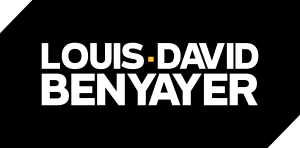A few years ago, Porter wrote a very interesting article about how IoT (How smart, connected products are transforming competition). Of course, a lot of it has to do with data and make-or-buy decisions. In particular, are identified 10 strategic questions to solve in this new business environment, below are the 5 related to our topic today:
- Should the company pursue an open or closed system?
- Should the company develop the full set of capabilities or outsource?
- What data must the company capture, secure and analyse to maximize the value of its offering?
- Should the company fully or partially disintermediate distribution channels or service networks?
- Should the company enter new businesses by monetizing its product data through selling it to outside parties?
If we apply these questions to our previous framework, it means that for each component of the data value chain the company has 4 choices:
- Make: realise the activity with internal resources and capabilities
- Source: purchase on the market products or services available
- Buy: acquire a company realising the activities
- Partner: forge an alliance with another company to share resources
The usual framework for deciding on one of the 4 option blends several dimensions:
- Opportunity. For example, is there a market for sourcing?
- Cost. The direct costs of the solution and indirect costs, for example, the opportunity cost in case you develop it internally
- Risk. The technological risk associated with one solution.
- Customization. Is the solution tailor-made or designed for a wide range of usages?
- Dependence. How reversible the decision is?
Market trends to take into consideration
Analysing the market is necessary, in particular, to assess the level of opportunity associated with Source and Buy options. I will not enter here in a detailed market study but will focus on 4 insights I excerpted from an analysis by a VC firm in 2019.
- Infrastructure: from Hadoop to the cloud services to a hybrid environment (to balance the cost of cloud services and lock-in). This increases complexity (compatibility + tracing data)
- Analytics: consolidation (eg: acquisition of Tableau by Salesforce) and democratization of M/L usage in corporation supported by commoditized products (Dataiku)
- Applications: burgeoning of AI solutions to tackle specific use cases
- Cloud service companies are extending their scope to AI/ML solutions (internal development + mergers) to increase revenue and lock-in
Comparison of the 4 options
Let’s now rapidly compare the 4 options.
Make
(Use internal human and technical resources)
Main advantages: Full customization + Total control of the value capture
Limits: Do not benefit from scale effect + Do not leverage external expertise + Requires high internal expertise
Examples
- Banks for their market activities, example here with Goldman Sachs.
- Wallmart. Interview here with the AI lead by MIT.
Source
(Buy on the market, off-the-shelves product and services)
Main advantages: Benefit from scale effect + Benefit from external expertise
Limits: Lower customization + Lock-in and dependence + Low capitalisation of expertise
Examples: see the market mapping here.
Buy
(Acquire a company and its stack of resources and capabilities)
Main advantages: Time to delivery + Benefit from external expertise + Control of the value capture
Limits: Integration execution risk + Cost ?
Examples
- BMW, Audi and Daimler’s HERE purchase is about more than maps
- McDonald’s Bites on Big Data With $300 Million Acquisition
- L’Oréal buys beauty tech Modiface
Partner
(Agree with another company to leverage together individual resources and capabilities)
Main advantages: Flexible over time + Lower risk (shared costs)
Limits: Medium-term alignment of interests + Value sharing between partners + Limited customization
Examples
Conclusions on the choice between the 4 options
Of course, the choice remains highly context-dependent and we will come back to this in the next edition. According to the strategy pursued, the level of resources available or the actions of direct competitors, the choice between the 4 options would differ.
However, I stress here 3 main conclusions:
- Data capture is the most distinctive part of the value chain. Of course, some difference can be made at other parts but the ability to gather a rare and difficult to copy dataset plays a huge role in creating a high-value positioning.
- Capabilities on the collection and analysis parts are now numerous on the market. It means more opportunities for source or buy options as it reduces the differentiation. Make options are preferred when the use case requires high domain-specific knowledge.
- To achieve major performance improvements, some acquisitions target to acquire also «non-data» capabilities. As we described previously, tech-related resources and capabilities are necessary but not sufficient, design and community management are also necessary. Acquisitions are sometimes used to acquire these capabilities.

